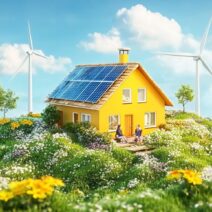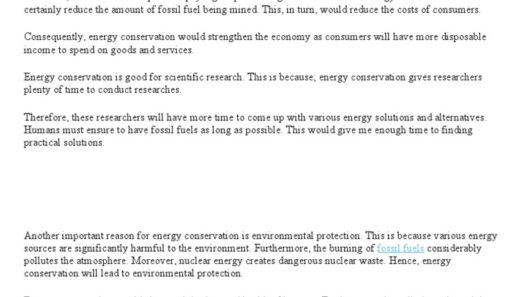Eco-friendly living is not merely a trend; it is an essential lifestyle choice that can significantly reduce our carbon footprint and contribute to environmental sustainability. Energy conservation indoors is particularly important, as it allows individuals and families to lower their energy bills while simultaneously promoting a healthier planet. In this article, we will delve into three effective ways to conserve energy within our homes: optimizing heating and cooling systems, employing energy-efficient appliances, and implementing smart lighting solutions.
First and foremost, optimizing heating and cooling systems is paramount to energy conservation. In many households, significant energy is wasted through inefficient HVAC (heating, ventilation, and air conditioning) systems. One fundamental step in this process is ensuring that these systems are regularly maintained. Clogged filters and dysfunctional vents can result in reduced efficiency, driving up energy consumption unnecessarily. Homeowners should conduct regular inspections, and change filters every few months to ensure optimal airflow.
Moreover, the strategic use of programmable thermostats can further enhance energy savings. By allowing residents to set specific temperatures for different times of the day, programmable thermostats ensure that energy is not expended when homes are unoccupied. For instance, lowering the temperature when everyone is at work or school could lead to substantial energy savings. In summer months, setting the thermostat to a higher temperature when away contributes to reduced air conditioning expenses.
Another effective method to optimize heating and cooling is to harness the power of insulation. Properly insulating your home can prevent conditioned air from escaping, ultimately reducing the energy required to heat or cool living spaces. Insulation can be installed in attics, walls, and floors, and it is worthwhile to conduct a thorough energy audit to identify areas that may require enhancement. This proactive approach not only conserves energy but also promotes a more comfortable living environment.
Next, employing energy-efficient appliances is a significant aspect of indoor energy conservation. Modern technology has yielded an impressive array of energy-efficient home appliances designed specifically to reduce energy consumption without sacrificing performance. When purchasing appliances, look for the ENERGY STAR label, which indicates compliance with energy efficiency guidelines set by the U.S. Environmental Protection Agency.
For example, energy-efficient refrigerators use advanced cooling technologies that consume far less electricity than traditional models. Similarly, front-loading washing machines typically use less water while providing superior cleaning capabilities compared to their top-loading counterparts. By upgrading to energy-efficient appliances, households can enjoy not only lower energy bills but also improved performance, highlighting the oft-overlooked correlation between technology and responsibility.
Moreover, the initiative should extend to smaller appliances. Items like microwaves, toasters, and coffee makers can contribute significantly to household energy consumption. Choosing compact and energy-efficient devices can further enhance energy savings, along with encouraging mindful usage. Remember to unplug appliances when they are not in use to eliminate phantom energy consumption, a term that describes the electricity used by devices even when turned off.
Finally, implementing smart lighting solutions is another effective approach to conserving indoor energy. Traditional incandescent bulbs are increasingly being replaced with energy-efficient LED (light-emitting diode) lights. Not only do LEDs consume less energy, but they also boast a longer lifespan, resulting in fewer replacements and reduced waste. Transitioning to LED lighting can lead to significant reductions in household energy consumption, translating to lower utility bills.
The integration of smart lighting systems can elevate energy efficiency to the next level. Systems that allow homeowners to control lighting remotely through smartphones or timers provide a practical solution to the common habit of leaving lights on in unoccupied rooms. Additionally, utilizing natural light can have a profound impact on energy conservation. Maximizing the use of daylight by strategically placing mirrors and opening curtains can reduce the reliance on artificial lighting during daylight hours. This simple practice fosters a more sustainable living environment while promoting a connection with the outdoors.
Beyond these practical steps, it is essential to foster a culture of energy conservation within households. Educating all family members, particularly children, about the importance of conserving energy instills a sense of shared responsibility. Simple initiatives, such as designating days for energy-saving challenges or rewarding mindful energy usage, can further encourage conscious choices and contribute to long-term habits.
In conclusion, eco-friendly living hinges on the lifestyle choices we make in our daily lives. By optimizing heating and cooling systems, employing energy-efficient appliances, and implementing smart lighting solutions, households can make significant strides toward conserving energy. These practices not only help to reduce energy costs but also enhance environmental sustainability. As the collective awareness of energy conservation continues to evolve, embracing these approaches reflects a commitment to protecting our planet for future generations. Energy efficiency is not merely an aspiration; it is a necessity for a sustainable future.








